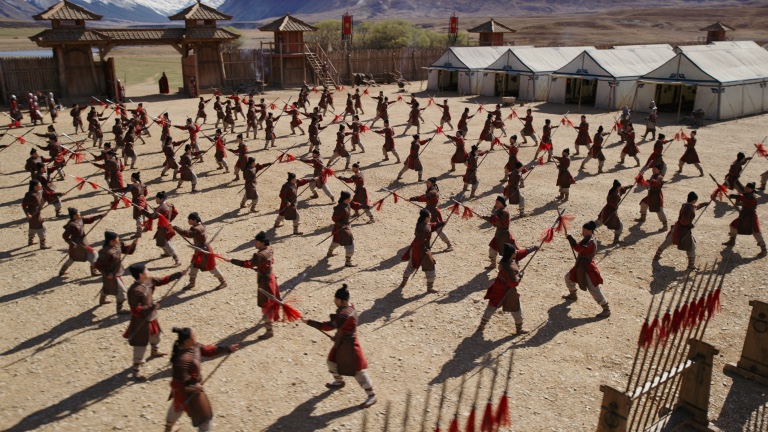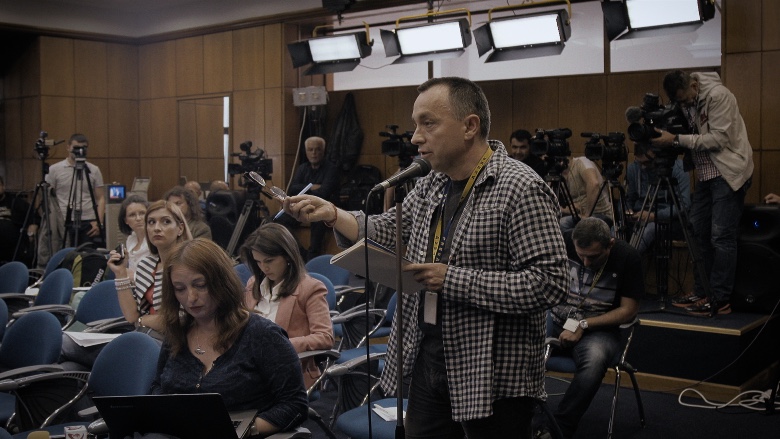
Collective (Colectiv) is a documentary from Romanian filmmaker Alexander Nanau (Toto and His Sisters, The World According to Ion B.) that follows a trio of investigative reporters as they delve deeper into the Colectiv Nightclub fire in Bucharest, Romania on October 30, 2015. 27 people were killed, over 180 injured, with an additional 37 burn victims in the hospital which led to 64 total deaths. The journalists unraveled the political corruption connected to the healthcare system and pharmaceutical company that led to the death of many innocent lives.
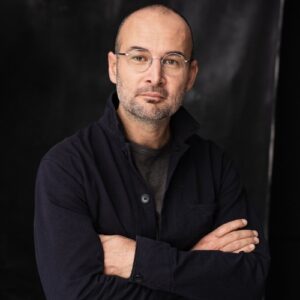
The movie naturally formed from the focus on the fire leading to the hospital systems and ultimately, to the political connection. Nanau described, “I didn’t start out thinking that I will want to make a movie about the Romanian hospital system. Actually, I was triggered by the demonstrations that started after the fire. We had these really big demonstrations; young people claiming for the political class to take a step back because they are all corrupt and the fire should not have happened if the club had no fire exits and were authorized. I wanted to understand through a film what is happening in this young democracy between the power and people. The fact that they already started to lie and manipulate the public opinion about their capacity of treating all these burned patients and the capacities of the remaining healthcare system. That led me towards these journalists because they started to reveal the lies. It was in a way written by life. When we started filming with the journalists, the Hexi Pharma investigation appeared, we didn’t decide that.”
The story in the documentary opens up and unfolds unexpectedly right in front of the eyes of the audience. “What we did is we filmed observationally. We just decided to follow the journalists in their investigations in the healthcare system. We didn’t know that another minister of health would come in. We were filming, but the journalists wouldn’t tell us all the details about what they’re investigating, so it was also a surprise for us. Basically, what we see is real life as it emerged in front of our camera,” the filmmaker revealed.
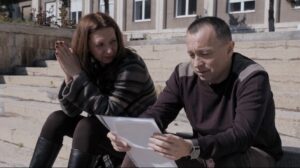
The film highlights the journalists, the new Romanian Minister of Health, and one of the burn victims, Tedy Ursuleanu. “Our development team started to look at all the characters that were involved with this fire accident; so, all the parents, the victims, doctors, and journalists. We met all of them, did dozens of hours of interviews, and we tried to find out whose story will evolve in a way that we’re interested to follow. In particular with the girl and the parents, we decided that they really represent a symbol for all other victims or a symbol for all other parents that had to go through this pain of losing a child because a doctor and a politician lied to them,” the documentarian specified.
The team of the three investigative journalists include Catalin Tolontan, Mirela Neag, and Razvan Lutac. Nanau underlined, “They are old school journalists. They do journalism as it should be done. They did investigations over 20 years in the sports world and so they investigated a little corruption there. It was the first time they went into the healthcare system. Once this fire happened, that was really a national tragedy. The rest of the press didn’t react to it and didn’t really unveil the manipulation that was going on by the government. I think they felt obligated to use the skills and to step into the field of the healthcare system.”
The cameras filming the Romanian Minister of Health Vlad Voiculescu during critical and important decisions was a complicated matter due to certain privacy issues. “Basically, the fact that he was not a politician that came from outside the political sphere. He believed in transparency and the rights of patients to have access to information that concerns their health. He was open to let me film. It was not easy for him and for us because all the public servants hated us and him for the fact that he let the camera inside. It was his courage to let me film him,” the director illuminated.
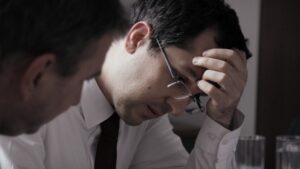
With further examination, journalist Catalin Tolontan exposed the Hexi Pharma Company for vastly diluting their medical solution and distributing that chemical to over 350 hospitals. In the documentary, the CEO of the Hexi Pharma Company was suddenly found dead. Nanau assumed, “As it was seen in the film, it was linked to the mob. Romania is most of the times very much linked to the political parties and corruption is still very big within. He was linked for sure. The question is if that was a suicide, maybe it was a suicide. I also think that people might have told him that he will have no chance or will go to prison for a very long time. My guess is that people used his depression because he was caught in order to make him feel there is no way out. The hospital managers are appointed by the politicians. The Hexi Pharma Company that contracts with 350 hospitals that sell their diluted disinfectants is what we describe as a mob because they’re working together.”
The documentarian continued, “The emotional impact and realizing how doctors and health officials can lie to parents knowing that their children may die or won’t get the best treatment. The lack of humanity that all this corruption inside the healthcare system implies that it takes away from people when they are the most vulnerable.”
The last few scenes with the Social Democratic Party winning the election reflects the unchanging political corruption that still remains. “In Romania, the Social Democrats have in a way inherited the former communist party. They are really the incarnation of corruption, as we know communist parties are working through corruption. They basically represent the party that takes over the state and steals all the public funds. The shock in the end was that so many people voted for them again, although they knew how much corruption they produce, and many young people didn’t go out to vote because they don’t believe in politics anymore. They felt let down by the by the technocratic government that was in place to reform the system, but they did not do it. There were one or two ministers like the Vlad character in the film, but it was not enough to reform a system. It tells us a lot about the fact after the populistic government or if the government that follows because people desperately voted for somebody else just to get rid of the of the populistic and corrupt government. If the ones that follow fail in implementing with zero tolerance towards corruption to implement a new way of politics, then the backlash will be harsh,” the filmmaker simplified.

Alexander Nanau’s documentary observes, examines, and unveils the deeply rooted political corruption embedded within the Romanian healthcare system. The power of investigative journalism from the trio of devoted and audacious journalists demonstrate the calling in discovering the absolute truth no matter who or what the opposing parties may be. Collective exposes the political corruption in the Romanian government and the healthcare system with hopes that people may be more aware and respond to proactively take a stand.
“My hope is that after people see the film, they actively do something when they see unjustness or corruption. Since the film came out in Romania, I know from journalists that the daily number of whistleblowers that reach out to them went up by 10 times. Maybe that’s the most the film can do, let people decide which side they’re on when they see corruption and when they see unjustly things.”
Collective is now available via Virtual Screenings and via Digital and On Demand.
All photos courtesy of Magnolia Pictures, Alexander Nanau Production, Samsa Film and HBO Europe





